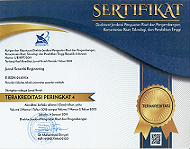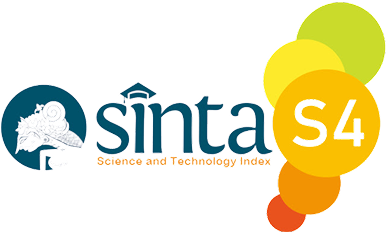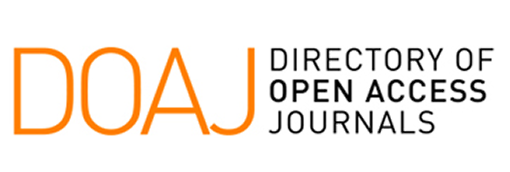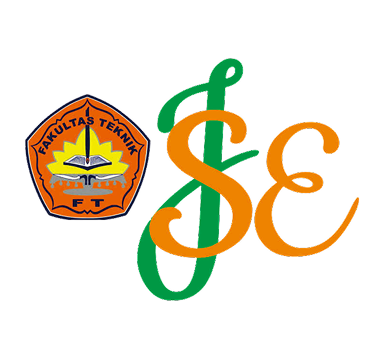Penerapan Inovasi Bahan Baku Alternatif untuk Efisiensi Biaya dan Keberlanjutan Produk Kerajinan
Keywords:
Raw Material Innovation, SMEs, Sustainability, Production Efficiency, Eco-Friendly CraftsAbstract
The strategic implementation of alternative raw materials has emerged as a pivotal approach to enhance cost efficiency and sustainability within the craft industry. This study employs a literature review approach to examine the use of local materials, organic waste, and recycled materials as substitutes for conventional inputs in MSME production. The findings indicate that replacing traditional raw materials can reduce production costs by up to 50% while enhancing product competitiveness in environmentally friendly markets. This innovation also generates social impact through the empowerment of local communities and the establishment of shorter supply chains. Nevertheless, challenges such as supply instability, technical limitations, and a paucity of regulatory support persist as significant obstacles. Consequently, a collaborative effort among government entities, micro, small, and medium-sized enterprises (MSMEs), designers, and research institutions is imperative to fortify the sustainable innovation ecosystem. The study's findings indicate that the adoption of alternative material innovations is not only conducive to economic efficiency but also serves as a catalyst for more inclusive and environmentally sustainable development.
References
[1] T. N. Zaki, M. Kamil, and S. Salahudin, “Community Empowerment In Economic Development In Sidoarjo,” DiA J. Adm. Publik, vol. 20, no. 01, pp. 317–335, 2022.
[2] S. K. Naradda Gamage, E. M. S. Ekanayake, G. Abeyrathne, R. Prasanna, J. Jayasundara, and P. S. K. Rajapakshe, “A review of global challenges and survival strategies of small and medium enterprises (SMEs),” Economies, vol. 8, no. 4, p. 79, 2020.
[3] C. Rusmina, M. Mawardi, M. Bakri, S. Susanti, R. Radhiana, and C. A. Surayya, “Meningkatkan Daya Saing UMKM melalui Penerapan Just-in-Time dan Teknologi Sederhana,” J. Serambi Eng., vol. 10, no. 1, 2025.
[4] Arsyad, S. Yana, Radhiana, Ulfia, Fitriliana, and Juwita, “Kendala Teknologi, Pendanaan dan Ketersediaan Bahan Baku Biomassa dalam Pengembangan Energi Terbarukan,” J. Serambi Eng., vol. 8, no. 1, pp. 4940–4946, 2023.
[5] F. Hanum et al., “Strategi Ekspansi Usaha UMKM dengan Pendekatan Metoda Hybrid SWOT Analisis dan AHP,” J. Serambi Eng., vol. VIII, no. 1, pp. 4991–4999, 2023, [Online]. Available: https://ojs.serambimekkah.ac.id/index.php/jse/article/view/5675
[6] S. Ikhbar, N. Nelly, M. Maksalmina, C. Amni, A. Arsyad, and A. A. Fansuri, “Strategi Pengelolaan Operasional untuk Meningkatkan Keuntungan dan Mengurangi Pengeluaran dalam Industri Daur Ulang Plastik,” J. Serambi Eng., vol. 10, no. 1, 2025.
[7] P. Mauliza et al., “Kendala Pemenuhan Suplai dan Permintaan Energi Terbarukan Biomassa Indonesia,” J. Serambi Eng., vol. 8, no. 3, 2023.
[8] O. T. Chiwaridzo, “Harnessing renewable energy technologies for energy independence within Zimbabwean tourism industry: A pathway towards sustainability,” Energy Sustain. Dev., vol. 76, p. 101301, 2023.
[9] M. Maryam, R. Nengsih, T. Makmur, S. Susanti, A. Arsyad, and A. R. Rahmi, “Meningkatkan Profitabilitas UMKM Pengrajin Gerabah dengan Efisiensi Keuangan dan Optimalisasi Produksi,” J. Serambi Eng., vol. 10, no. 1, 2025.
[10] M. U. Siqueira, B. Contin, P. R. B. Fernandes, R. Ruschel-Soares, P. U. Siqueira, and J. Baruque-Ramos, “Brazilian agro-industrial wastes as potential textile and other raw materials: a sustainable approach,” Mater. Circ. Econ., vol. 4, no. 1, p. 9, 2022.
[11] I. Jalil, M. Malahayati, S. Yana, H. Heriyana, I. Ilyas, and R. Nengsih, “Optimalisasi Proses Bisnis UMKM Kerajinan Gerabah melalui Sinergi Inovasi Pemasaran dan Manajemen Risiko Terstruktur,” J. Serambi Eng., vol. 10, no. 1, 2025.
[12] UNIDO, “Annual Report,” UNIDO, vol. 75, no. 17, pp. 399–405, 2021.
[13] E. Macarthur and H. Heading, “How the circular economy tackles climate change,” Ellen MacArthur Found, vol. 1, pp. 1–71, 2019.
[14] V. Skvarciany, I. Lapinskaitė, and G. Volskytė, “Circular economy as assistance for sustainable development in OECD countries,” 2021.
[15] D. Vrontis, G. Basile, M. S. Andreano, A. Mazzitelli, and I. Papasolomou, “The profile of innovation driven Italian SMEs and the relationship between the firms’ networking abilities and dynamic capabilities,” J. Bus. Res., vol. 114, pp. 313–324, 2020.
[16] M. Donner, A. Verniquet, J. Broeze, K. Kayser, and H. De Vries, “Critical success and risk factors for circular business models valorising agricultural waste and by-products,” Resour. Conserv. Recycl., vol. 165, p. 105236, 2021.
[17] U. Ulfia, R. Rahmi, Z. Yusuf, R. Radhiana, M. Mukhdasir, and A. Humaira, “Strategi Pemilihan Bahan Baku Daur Ulang untuk Meningkatkan Profitabilitas di Industri Pengolahan Limbah Plastik,” J. Serambi Eng., vol. 10, no. 1, 2025.
[18] P. Bianchi, S. Labory, and P. R. Tomlinson, Handbook of industrial development. Edward Elgar Publishing, 2023.
[19] Kementerian Perindustrian, “Peta Jalan Ekosistem Industri Hijau.” [Online]. Available: https://indonesia.go.id/kategori/editorial/8896/peta-jalan-ekosistem-industri-hijau?lang=1
[20] S. D. A. Kusumawardani, T. B. A. Kurnani, A. J. Astari, and S. Sunardi, “Readiness in implementing green industry standard for SMEs: Case of Indonesia’s batik industry,” Heliyon, vol. 10, no. 16, 2024.
[21] M. Javaid, A. Haleem, R. P. Singh, R. Suman, and S. Rab, “Role of additive manufacturing applications towards environmental sustainability,” Adv. Ind. Eng. Polym. Res., vol. 4, no. 4, pp. 312–322, 2021.
[22] N. Syamsuddin, S. Yana, N. Nelly, and ..., “Permintaan Pasar untuk Produk dan Layanan Energi Terbarukan (Perspektif Daya Saing Energi Terbarukan Indonesia),” J. Serambi Eng., vol. VIII, no. 1, pp. 4965–4977, 2023, [Online]. Available: https://ojs.serambimekkah.ac.id/jse/article/view/5673%0Ahttps://ojs.serambimekkah.ac.id/jse/article/download/5673/4156
[23] F. Fitriliana et al., “Peluang Investasi dan Pengembangan Energi Biomassa: Perspektif Pemanfaatan dan Daya Saing Pengembangannya,” J. Serambi Eng., vol. 8, no. 3, 2023, doi: 10.32672/jse.v8i3.6505.
[24] M. Marlina, S. Sufitrayati, S. Amri, N. Syamsuddin, R. Radhiana, and R. M. Akbar, “Inovasi Operasional untuk Efisiensi Biaya dan Peningkatan Profit di Industri Pengolahan Limbah Plastik,” J. Serambi Eng., vol. 10, no. 1, 2025.
[25] R. Radhiana, M. Mukhdasir, J. Surya, N. Syamsuddin, M. Maryam, and A. Syafitri, “Pengaruh Sistem Produksi Lean terhadap Pengurangan Biaya Produksi dan Peningkatan Profitabilitas di Industri Pengolahan Limbah Plastik,” J. Serambi Eng., vol. 10, no. 1, 2025.
[26] H. Canton, “United Nations Industrial Development Organization—UNIDO,” in The Europa Directory of International Organizations 2021, Routledge, 2021, pp. 365–367.
[27] OECD, “OECD Studies on SMEs and Entrepreneurship,” OECD. [Online]. Available: https://www.oecd.org/en/publications/oecd-studies-on-smes-and-entrepreneurship_20780990.html
[28] E. Giuliani, “Enhancing SME productivity,” in OECD SME and Entrepreneurship Papers, 2019.
[29] N. Topić Popović, V. Lorencin, I. Strunjak-Perović, and R. Čož-Rakovac, “Shell waste management and utilization: Mitigating organic pollution and enhancing sustainability,” Appl. Sci., vol. 13, no. 1, p. 623, 2023.
[30] ILO, “Decent Work and the Sustainable Development Goals: A Guidebook on SDG Labour Market Indicators.” International Labour Organization Geneva, 2018.
[31] A. Johri, M. Asif, P. Tarkar, W. Khan, and M. Wasiq, “Digital financial inclusion in micro enterprises: understanding the determinants and impact on ease of doing business from World Bank survey,” Humanit. Soc. Sci. Commun., vol. 11, no. 1, pp. 1–10, 2024.
[32] B. S. Prianto et al., “Flourishing MSMEs: The Role of Innovation, Creative Compliance, and Tax Incentives,” J. risk Financ. Manag., vol. 17, no. 12, p. 532, 2024.
[33] G. Dutta and R. Kumar, “Strategic Digitalization in SMEs of developing economies: Digital twin driven engineering value chain for customer-centricity,” Procedia Comput. Sci., vol. 232, pp. 2654–2669, 2024.
[34] T. B. Vongvisitsin and V. W. S. Tung, “Technology start-ups in tourism and hospitality: A networked social capital theory perspective from early-stage start-up founders,” Tour. Manag., vol. 106, p. 104996, 2025.
[35] S. Raes, “Understanding SME heterogeneity: towards policy relevant typologies for SMEs and entrepreneurship: an OECD Strategy for SMEs and Entrepreneurship,” 2021.
[36] K. S. Utami, “Penguatan Strategi Pemasaran UMKM di masa Pandemi Covid-19: Studi Kasus Pelaku Usaha Tenun di Kabupaten Kulon Progo,” J. Maksipreneur Manajemen, Koperasi, dan Entrep., vol. 11, no. 2, pp. 284–302, 2022.
[37] Bappenas, “Laporan Pelaksanaan Pencapaian Tujuan Pembangunan Berkelanjutan/Sustainable Development Goals (TPB/SDGs) Tahun 2023,” Kedeputian Bid. Kemaritiman dan Sumber Daya Alam, Kementeri. Perenc. Pembang. Nasional/Badan Perenc. Pembang. Nasional, Jakarta, 2023.
Downloads
Published
Issue
Section
License
Copyright (c) 2025 Sufitrayati, Fitriliana, Ulfia, Nurfiani Syamsuddin (Author); Alfian Nurhadi (Translator)

This work is licensed under a Creative Commons Attribution 4.0 International License.












